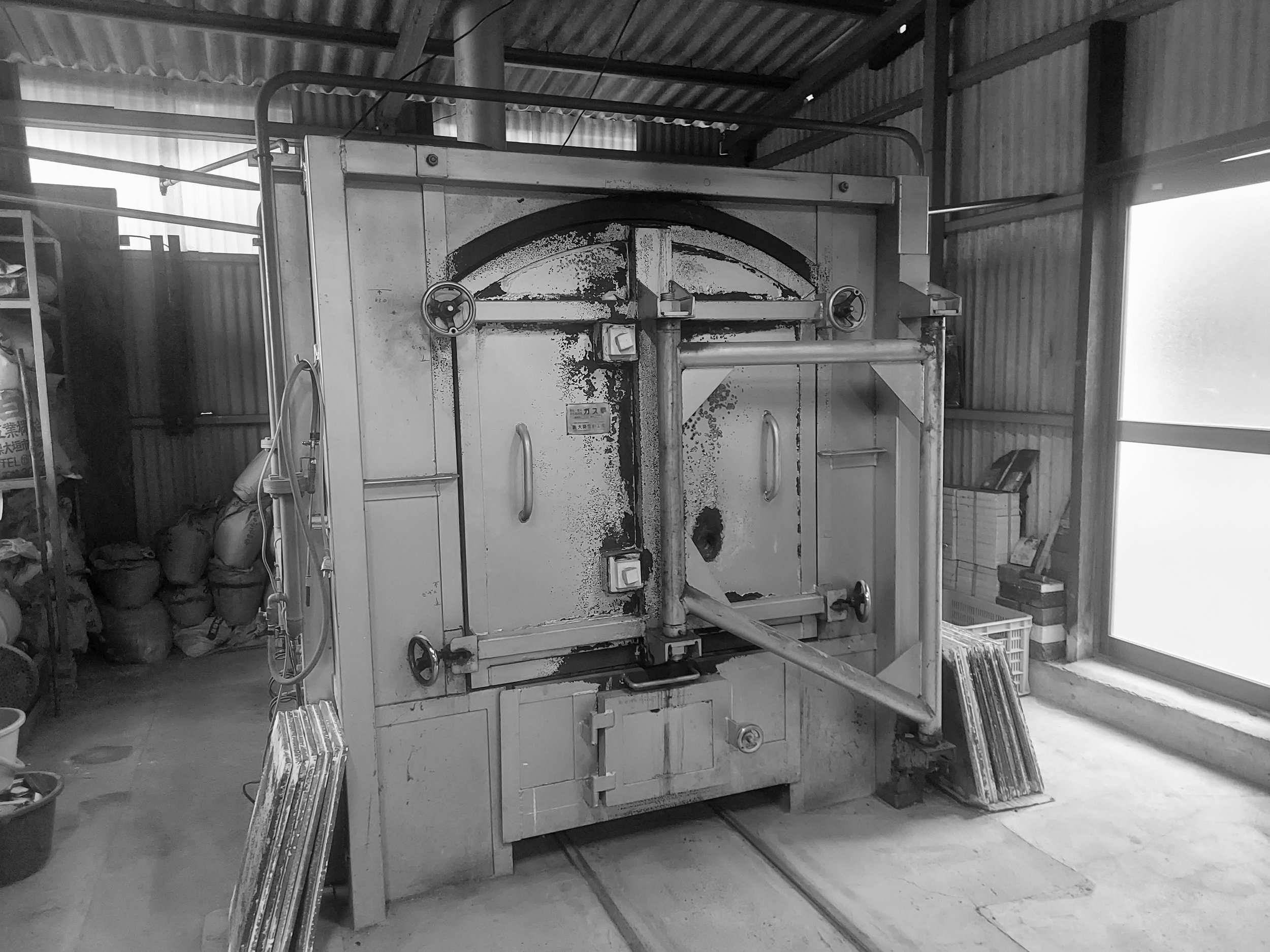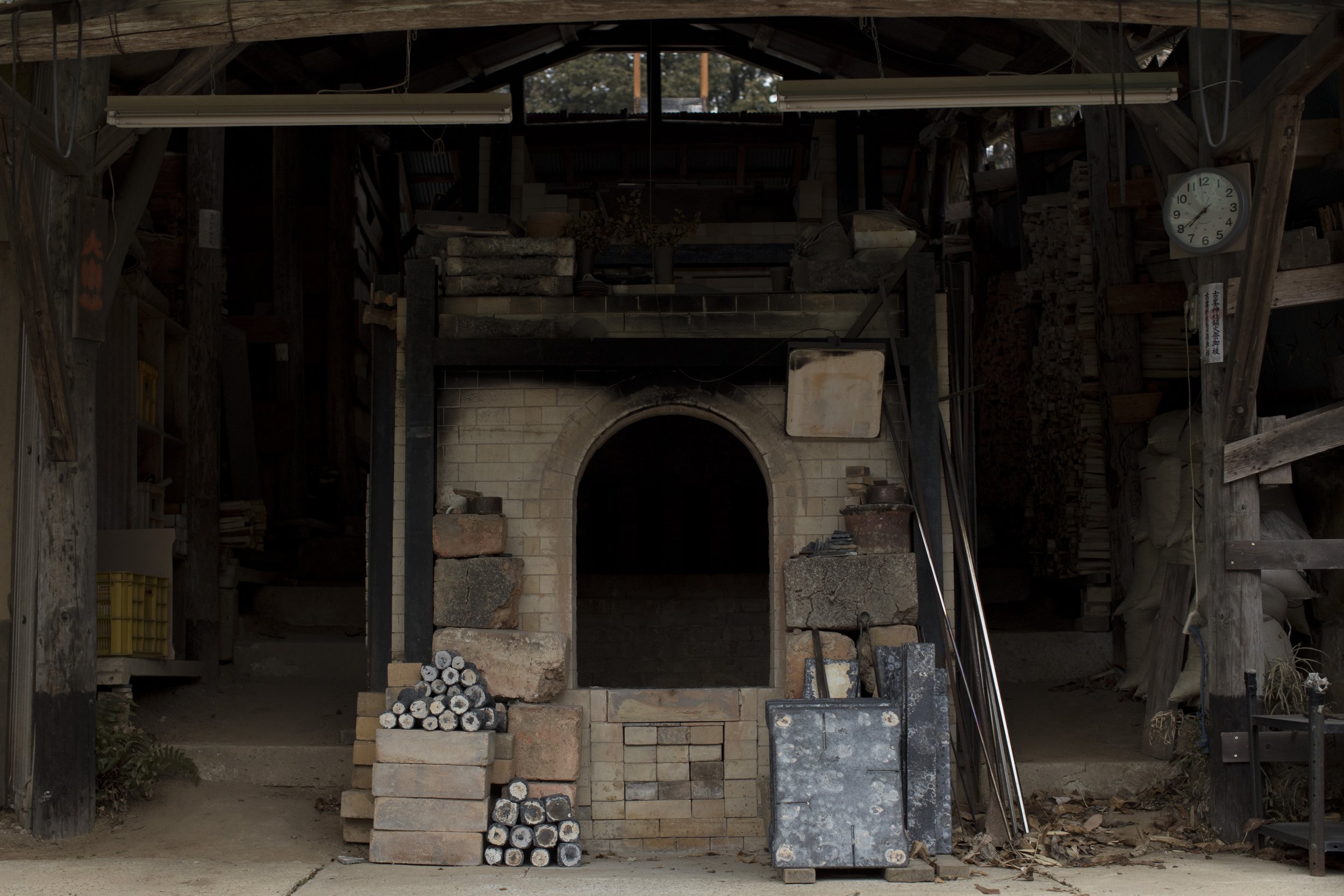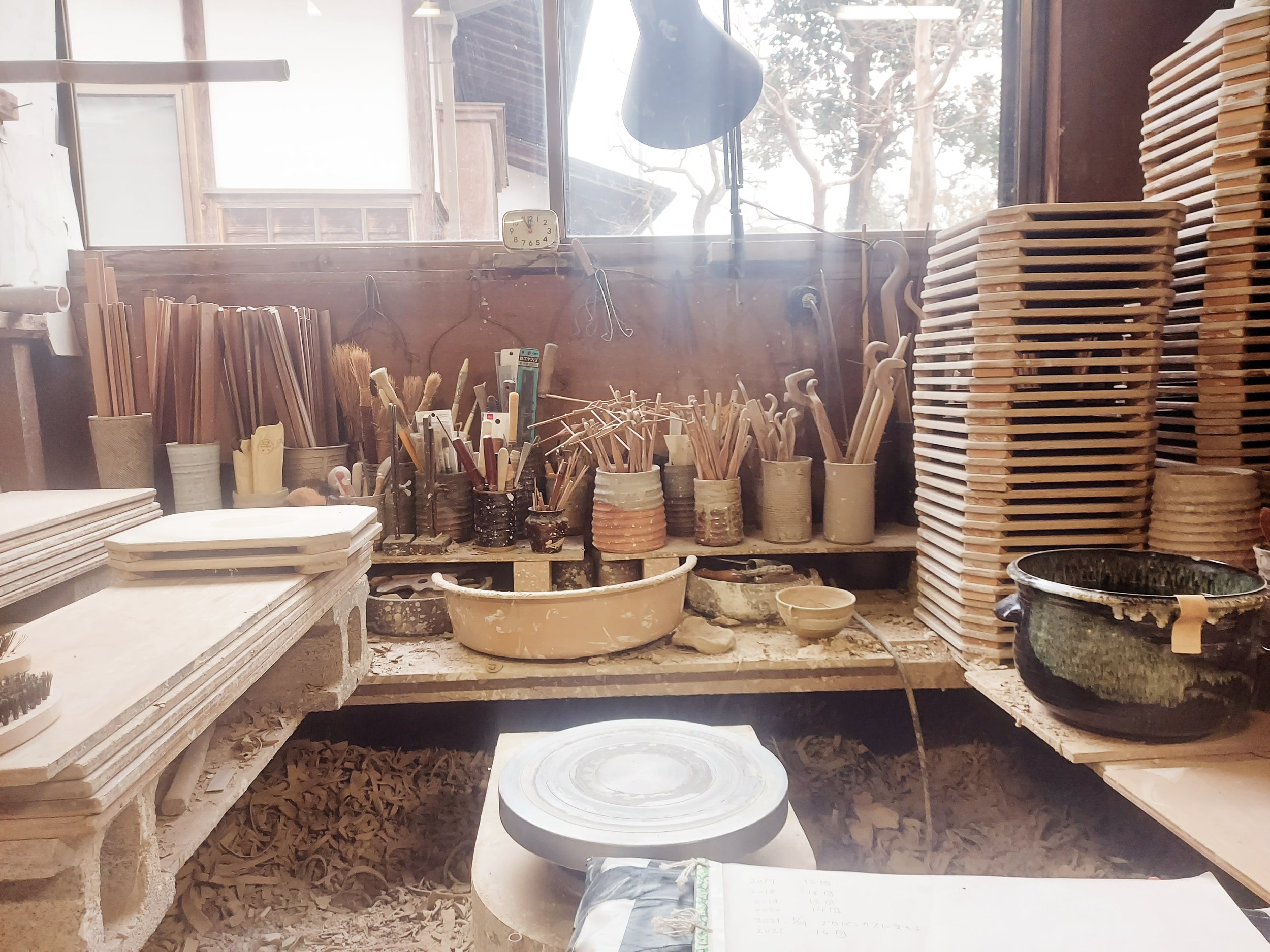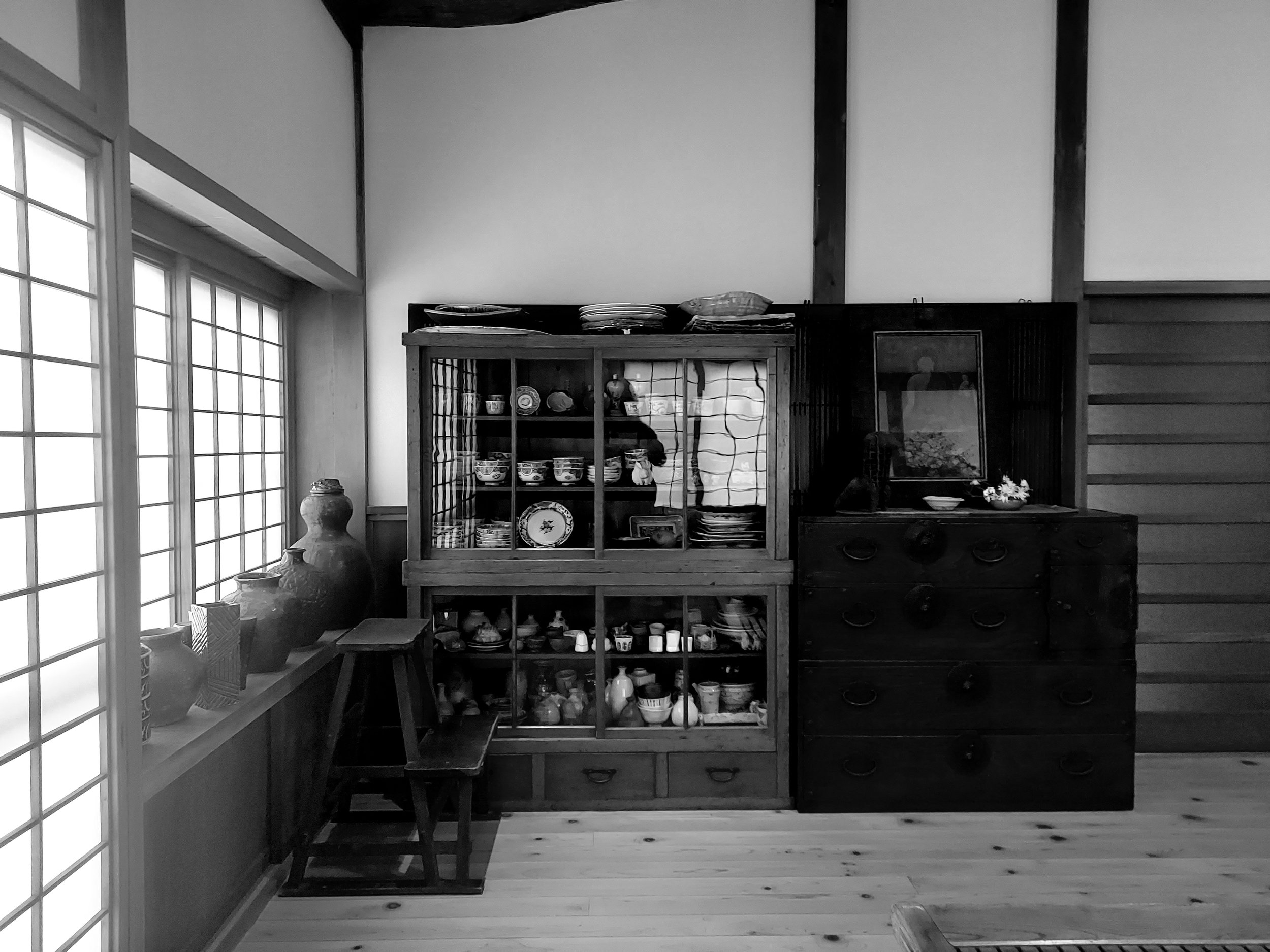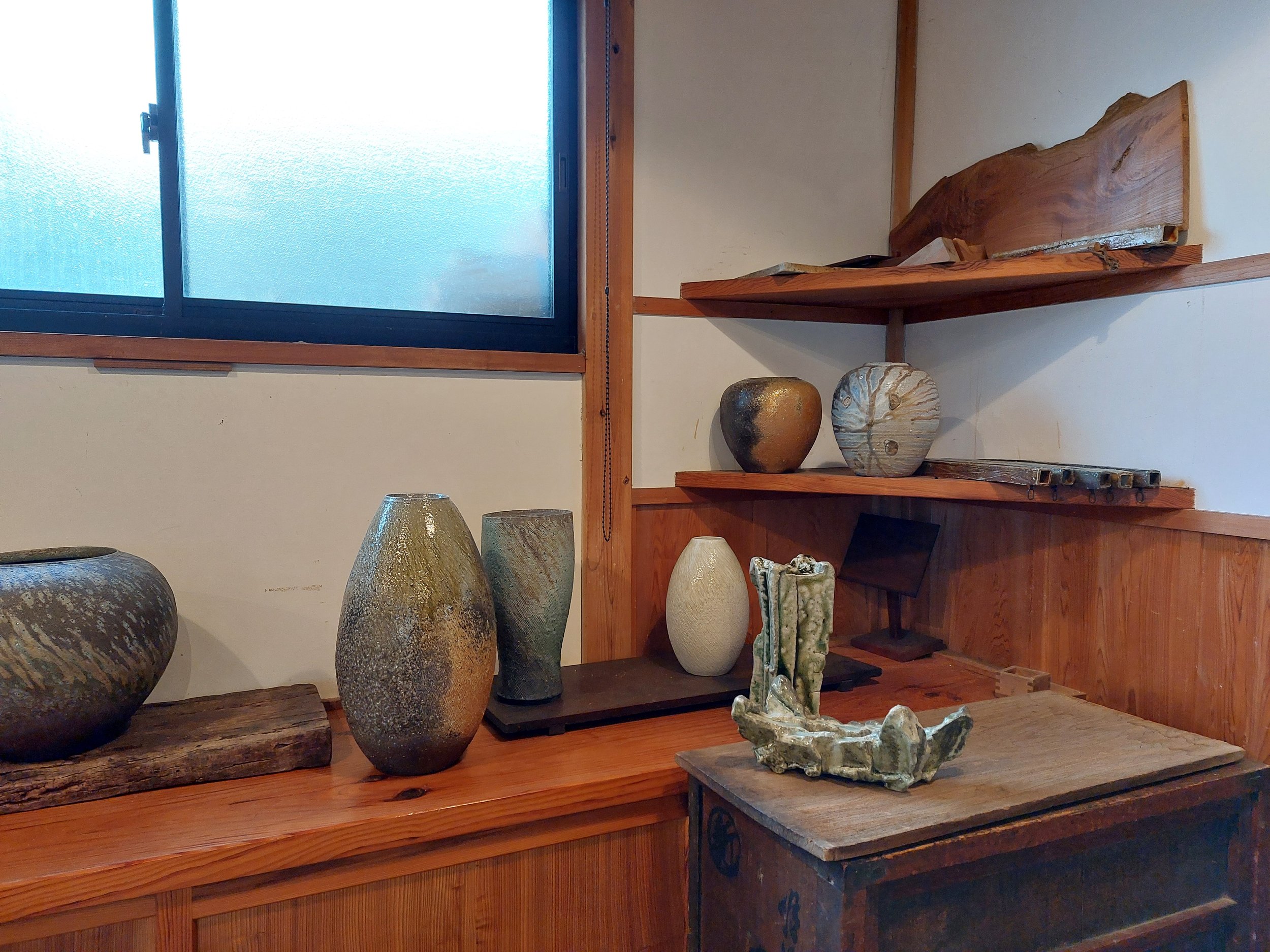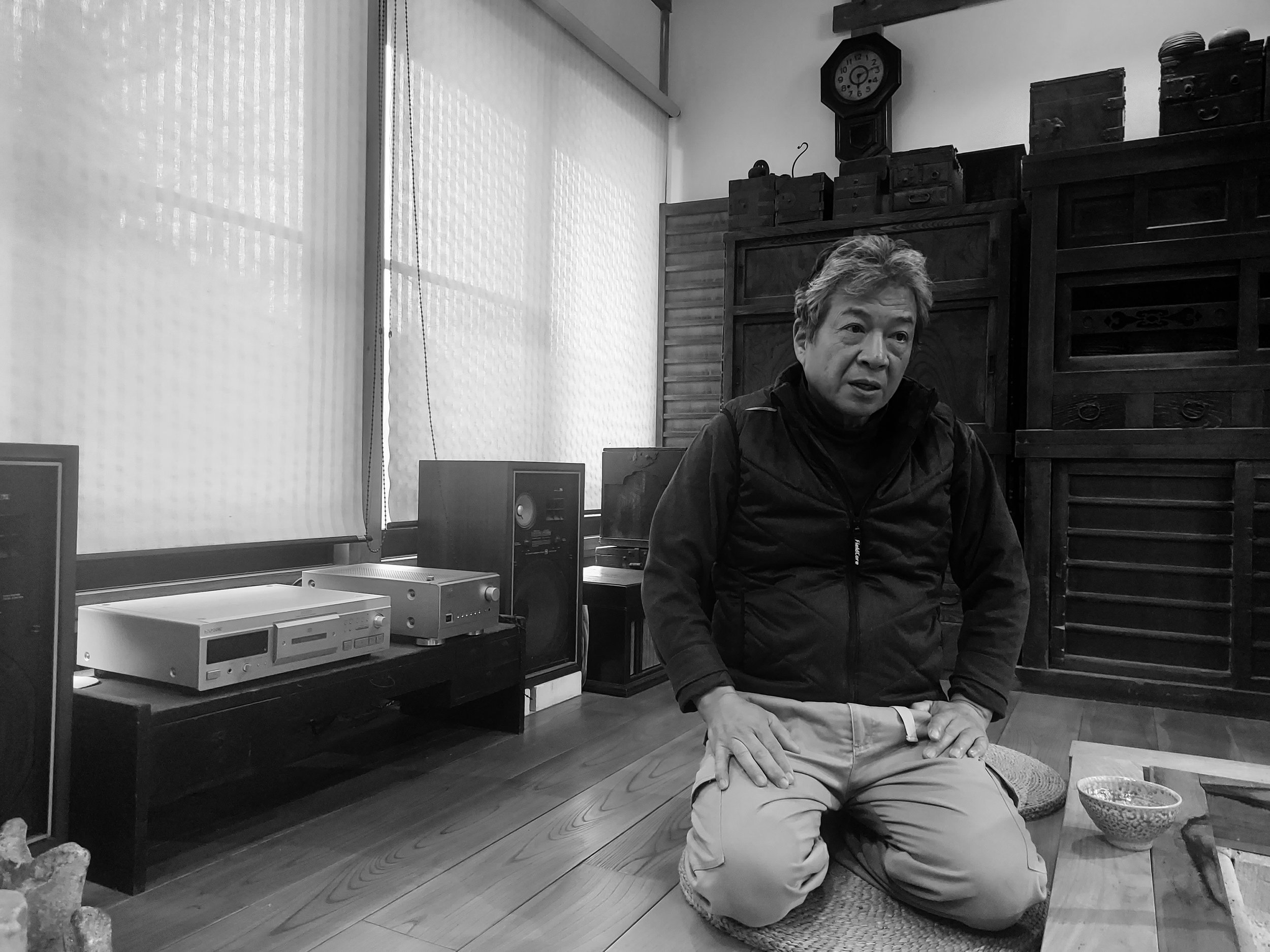The Ceramics of Shūji Haneishi
We spoke to Kasama Potter Shūji Haneishi at his studio, about his award winning wood-fired ceramics and his approach to his craft.
Shūji Haneishi’s notebooks contain details of 727 different firings of his kiln. While his ceramic process relies on nature, he is not passive within it. Rather, his work is meticulous.
The workhorse kiln of his studio is the gas-powered metallic box kept beyond an iron sheet that subdivides the room. The other part is devoted to a wheel on which he forms his works, and shelves of test pieces and records that inform their creation. Up the hill outside the door, is a wood-fired kiln. A brick construction made to Haneishi’s specifications, this is the core of his ceramic world. In two annual firings that last five days each, he puts all his experience and accrued data into its operation.
An ‘ana-nobori’, the kiln combines characteristics of the small anagama kilns used in Japanese ceramics for the ages, and the ‘climbing’ hillside kilns (noborigama) that were imported from Korea at a later stage. Haneishi takes the main chamber of his kiln to 1300 degrees using logs he has chainsawed and dried. The type of wood used produces different effects in the kiln, and he maintains a physical palette of neatly tied bundles that he draws on in the firings. A separate chamber in the upper section of the kiln is reserved for salt firing. Using a cut bamboo stick of the madake type he funnels salt into the chamber once the moment comes.
For his wood-fired kiln, Haneishi has notes on 51 different firings. This reflects his 25 years of work on this hill. To the pieces fired in the lower chamber, he applies no glaze at all and relies entirely on the effects of ash and flame. But he rejects a ‘born and not made’ characterisation of his work, or any claim that it is somehow a product of coincidence. He knows in detail the landscape of the chamber, the evolution of the flame, the movement of the ash, and how the ash of each wood will behave. Unexpected occurrences, a colour or effect not anticipated, provide data for the next firing. Making the unexpected expected, is Haneishi says, part of his pride as a professional.
Prior to the firings is the work on his wheel. Here lumps of clay in a mix that he has studied and developed, are handled into large urns and vases, or smaller ornaments and sake ware. The aim of the process is to create a canvas for ash and salt. To this end he combs the surface. Initially he used a small metal tool for this, but once again, refinements in his process led to a new solution. Using a chisel, he has customised the blade of a Japanese nokogiri type axe, which he brings to the clay. The groves created give directional flow to the ash in the kiln and take Haneishi closer to the effect and balance he desires. He completes the groves with an adapted wire brush.
His gas-fired kiln allows Haneishi to bisque fire pieces before their meeting with ash in the main chamber, or to add additional effects on the way back. The salt chamber of the ana-nobori is a detour in which dramatic effects can be made to the surface. The aim again, is new textures, new contexts of expression. In each case, Haneishi brings experience and imagination.
In his practice, Haneishi combines the characteristics of a Japanese creative ceramicist, with those of an engineer in perfection. His notebooks record what he has done, and provide a physical database, second only to the pieces themselves. These are lined across the walls of separate gallery space and stand in combed monolith, marked by coloured clouds of ash explosion on their surface.
Shūji Haneishi was born in Shimodate, to the west of Kasama, where he is currently based. Attracted by pottery in his teens, he travelled to Kyoto to receive early training, before completing it at the predecessor institution of the Ceramic University in Kasama. Here, Haneishi did not follow the common practice of apprenticing with a senior potter, nor does he recall the influence of any particular teacher. “It was not like it is now when they give guidance to every step, I watched my senior classmates, and learnt through experiments.” It is not clear if he would have appreciated a mentor in any case. “People say I am strange but, I am interested in music, and not the musician. I can describe works of ceramics I admire, but would not single out a ceramicist.” Pushed, Haneishi cites the work of Shōji Hamada in neighbouring Mashiko, before recoiling again from the concept of a single influence.
Haneishi’s real place of learning was the base he built in Kasama. A large flat building with roof tiles replaced after the 2011 earthquake, the house is a monument to his sense of aesthetics; the adjoining studio a place of creation. An important moment in his ceramic journey was Haneishi’s switch to wood firing in his mid-30s. A process full of risk and loss, his approach based on meticulous experimentation was suited to mastering it. “It took a few years to get used to it, and it was a mountain of failure to begin with. You couldn’t ask people, and each kiln is different in any case. For me, it was all self-study.”
With a growing pile of pots broken or beneath his standard, Haneishi gradually found his style and a method to achieve it. The range of outcomes available to him grew as he understood the heat characteristics within each location of his kiln, the effect of different ashes, different directional flows. He attempted multiple firings for pieces in different kilns; adjustments to the surface texture of his clay bodies. In time, colours began to emerge that Haneishi’s contemporaries had not seen before, such as the emerald inflected blue green of his large pots.
While his process is solitary, and in his early career he eschewed tuition and influence, Haneishi retains a hunger for ceramic ideas. He has been a regular at the prestigious exhibition of the Japan Kōgei Association for the past twenty years. “From my late-30s I thought I would attempt for the national exhibitions… What is great about it is the chance to meet the people who submit for those shows, with the ambition and power that they have. It’s inspiring.”
In a process he compares to hard exam study every year, Haneishi achieved his greatest mark in 2021 when he took a lead award at the exhibition. One of Japan’s top ceramic prizes. “I did not change my approach, I did not lobby for it… I even thought the piece was a little misshapen. But it made me realise that people did not care about that when they appreciated my work.”
This success become more data for Haneishi to feed into his experiments. Doing the same thing will not lead to more awards he reasons, and in any case, would bore him. So he continues to refine and evolve his process. But this is not his only motivation. “All of our time is limited and I don’t want to waste what I have. I want to make something” he said. “Also I want to pass something on. I have 25 tonnes of clay; more than I could ever use. I have tools and techniques that I made. I would like to pass them on to someone with the motivation to learn.”
Haneishi’s ceramics reflect who he is: a celebrated exponent of traditional Japanese techniques. His own teacher and his own harshest judge. But with it, a generosity of spirit that burns strongest of all.


